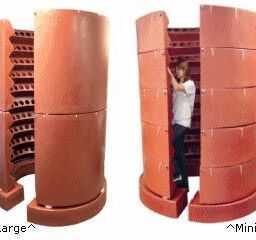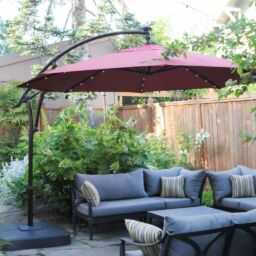Green is about long-term. Reducing the impact on the environment takes time, and an investment. More than monetary motivation is needed to use Green; it takes a dedication to the furthering of the technology and practices.
One industry currently going through a Green revolution is home lighting. Incandescent Bulbs have been around for over 100 years, with Compact Fluorescent bulbs gaining substantial market traction. LED bulbs are the relatively new entrants to this industry with some exciting promises. LEDs (Light Emitting Diodes) have been around for quite some time, but have historically been used in specific implementations where cost is not a factor. Recently, LEDs have been prominent for implementation in- vehicle lights, TVs, and computer monitors to name a few. This growing adoption has driven the price of LEDs lower and lower.
Consumer LED bulbs are comprised of multiple small LEDs (18+). They provide a direct stream of light, illuminating wherever you point the light. The majority of bulbs are the color of daylight, but many different color options are available. They run extremely cool compared to incandescent light bulbs, and are encased in plastic for increased durability.
Application
Lighting accounts for 20 to 50 percent of total energy consumed for a house. The efficiency of a light source is measured in lumens per watt. As an example, a 40-watt bulb produces 390 lumens, or 12.6 lumens per watt. According to Wikipedia, Halogen is 24, fluorescent, 56; LEDs, 131; and low-pressure sodium is 200. According to ccrane.com, a 36 LED light bulb uses 3 watts, has a 60,000-hour bulb life, and a 60-lumen output. Given that the 40-watt bulb produces 390 lumens, 60 lumens is quite dim. There are other bulbs with a higher lumen count, but are classified as spotlights. As this technology evolves, we will see bulbs with larger LED clusters compete with other light sources on the brightness issue.
Costs and Benefits
There are multiple lighting technologies out there; here are a couple costs and benefits of each.
Incandescent
Costs: Energy inefficient, high heat output, short lifetime
Benefits: Cheap, bright
Halogen
Costs: High heat output, short lifetime
Benefits: More energy efficient than Incandescent, bright
Fluorescent
Costs: Tubes are fragile, require ballasts that can hum, tubes contain mercury, diffused light only- no spotlight ability, x
Benefits: More energy efficient, lower utility cost
LED Light Bulbs
Costs: High initial cost, not very bright, direct stream of light
Benefits: Extremely energy efficient, low total cost
If every U.S. household replaced just one standard 60 watt bulb with a CC Vivid LED bulb, we could save 24,184,400,000 watts or 24,184.4 mega (million) watts per day. National savings information based on 103,000,000 households with an average use of 4 hrs per day per house. Based on gross watts.
As with most Green technologies it comes down to the intangible cost to the environment when choosing which lighting technology to utilize. LED light bulbs can be a great way to build value when selling a home. Prospective buyers will see the low utility bill, and possibly the Green technology as a plus.
AUTOPOST by BEDEWY VISIT GAHZLY



